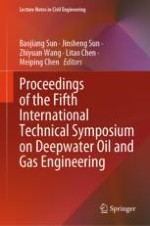2024 | OriginalPaper | Chapter
Optimization and Evaluation Experiment of Efficient Hydrate Anti-agglomerates Suitable for Gas-Water System
Authors : Jihao Pei, Zhiyuan Wang, Xiuan Sui, Genglin Liu, Jianbo Zhang, Junjie Hu
Published in: Proceedings of the Fifth International Technical Symposium on Deepwater Oil and Gas Engineering
Publisher: Springer Nature Singapore
Activate our intelligent search to find suitable subject content or patents.
Select sections of text to find matching patents with Artificial Intelligence. powered by
Select sections of text to find additional relevant content using AI-assisted search. powered by
